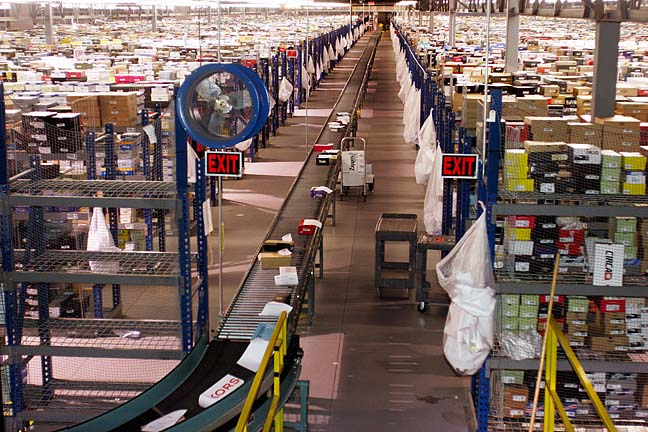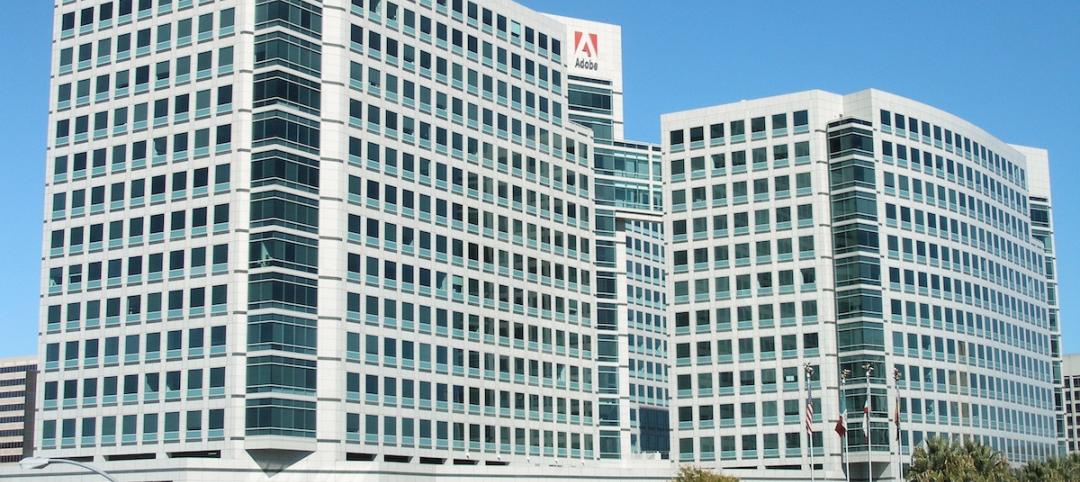It seems like a bit of modern day magic. Tap a few keys on your keyboard, perhaps with an accompanying mouse click or two, and then, voila!, one to two days later that new bestseller, necktie, or roll of novelty toilet paper you ordered is at your front door. And here you were thinking Santa Claus wasn’t real.
Okay, so maybe Santa has nothing to do with it, but it can be easy to forget those items you ordered didn’t just materialize out of thin air as if they were transported from the bridge of the Starship Enterprise. Sure, you clicked "Order" on Amazon, Target, or Walmart’s website, but what happens next? More likely than not, after your order information was received, the product had to be retrieved from a big box warehouse.
A big box warehouse is a facility that is over 300,000-sf with 28-foot ceilings or higher. These warehouses are commonly used among retailers to store products awaiting purchase by online consumers. As more and more sales start to take place online, retailers are beginning to adjust their distribution networks accordingly, The Wall Street Journal reports.
In 2015, 61 million sf of these big box warehouses were constructed in North America. That marks an increase of almost 6 times in a four-year span, according to Colliers International Group. There isn’t expected to be any slowdown in 2016, either, as an additional 74 million sf are projected to be completed by the end of the year.
Home Depot, Target Corp., and Wal-Mart Stores Inc. all felt the need, due to the uptick in online shopping, to build huge fulfillment centers meant to store, pack, and ship items to online customers.
These large warehouses aren’t necessarily out in the middle of nowhere, either. As one- and two-day deliveries become the standard for much of the country, building close to large population centers, ports, and rail lines is becoming imperative. There is 16.2 million sf of big box construction occurring in the Los Angeles area alone, and Eastern Pennsylvania and New Jersey aren’t far behind, with 13.3 million sf under construction.
Additionally, there is a trend toward building slightly smaller warehouses, in the 200,000-sf range, in high population urban zones to increase the speed at which online customers can receive their purchases even further. Some Amazon customers are able to get their deliveries a mere one to two hours after making the purchase.
These big box warehouses and their smaller-sized counterparts aren’t acting as a snake eating its own tail, either. Instead, they are working in tandem as a “two-pronged approach,” according to Dwight Hotchkiss, National Director of U.S. Industrial Services for Colliers. The smaller warehouses are able to satisfy one-hour delivery to urban markets while the big box warehouses handle one-day and same-day e-commerce.
While they might not be as rare (and becoming less so every day) or whimsical as Santa’s workshop, these big box warehouses are basically the real world equivalent. And as more of them are created close to urban centers, you won’t have to wait until the holidays to receive your packages. At the pace these big box warehouses are being created, you might not even have to wait until tomorrow.
Related Stories
Contractors | Feb 6, 2015
Census Bureau: Capital spending by U.S. businesses increased 4.5%
Of the 19 industry sectors covered in the report, only one had a statistically significant year-to-year decrease in capital spending: the utilities sector.
Warehouses | Feb 5, 2015
Self storage facility designed to blend in with Miami Beach's party scene
The plans by architect Gutierrez & Lozano are of a sleek, boutique-looking, 22,500-sf facility at the gateway to the city.
| Jan 2, 2015
Construction put in place enjoyed healthy gains in 2014
Construction consultant FMI foresees—with some caveats—continuing growth in the office, lodging, and manufacturing sectors. But funding uncertainties raise red flags in education and healthcare.
| Dec 28, 2014
AIA course: Enhancing interior comfort while improving overall building efficacy
Providing more comfortable conditions to building occupants has become a top priority in today’s interior designs. This course is worth 1.0 AIA LU/HSW.
| Nov 18, 2014
New tool helps developers, contractors identify geographic risk for construction
The new interactive tool from Aon Risk Solutions provides real-time updates pertaining to the risk climate of municipalities across the U.S.
| Oct 16, 2014
Perkins+Will white paper examines alternatives to flame retardant building materials
The white paper includes a list of 193 flame retardants, including 29 discovered in building and household products, 50 found in the indoor environment, and 33 in human blood, milk, and tissues.
| Oct 15, 2014
Harvard launches ‘design-centric’ center for green buildings and cities
The impetus behind Harvard's Center for Green Buildings and Cities is what the design school’s dean, Mohsen Mostafavi, describes as a “rapidly urbanizing global economy,” in which cities are building new structures “on a massive scale.”
| Oct 12, 2014
AIA 2030 commitment: Five years on, are we any closer to net-zero?
This year marks the fifth anniversary of the American Institute of Architects’ effort to have architecture firms voluntarily pledge net-zero energy design for all their buildings by 2030.
| Sep 24, 2014
Architecture billings see continued strength, led by institutional sector
On the heels of recording its strongest pace of growth since 2007, there continues to be an increasing level of demand for design services signaled in the latest Architecture Billings Index.
| Sep 22, 2014
4 keys to effective post-occupancy evaluations
Perkins+Will's Janice Barnes covers the four steps that designers should take to create POEs that provide design direction and measure design effectiveness.















